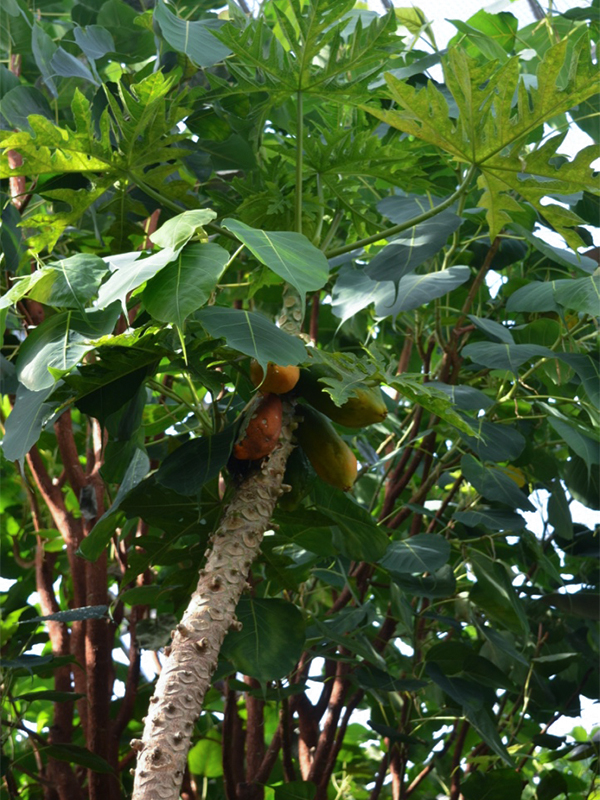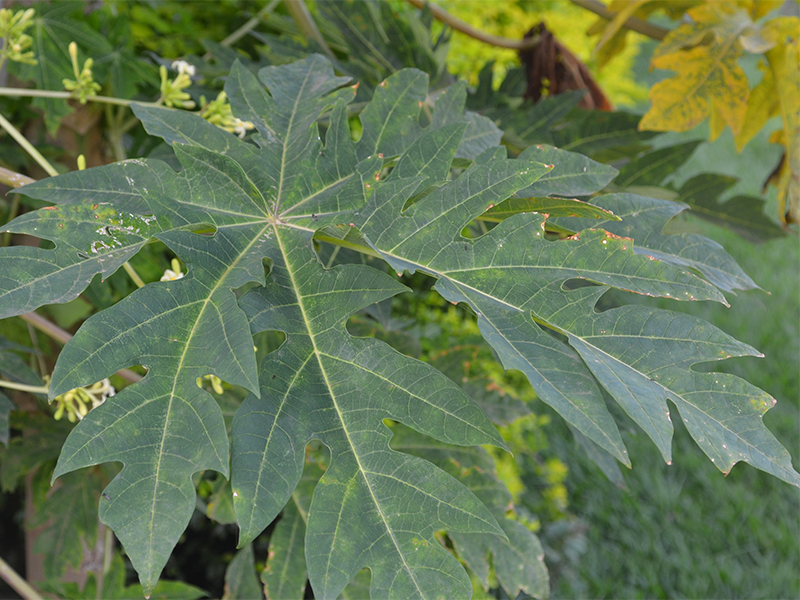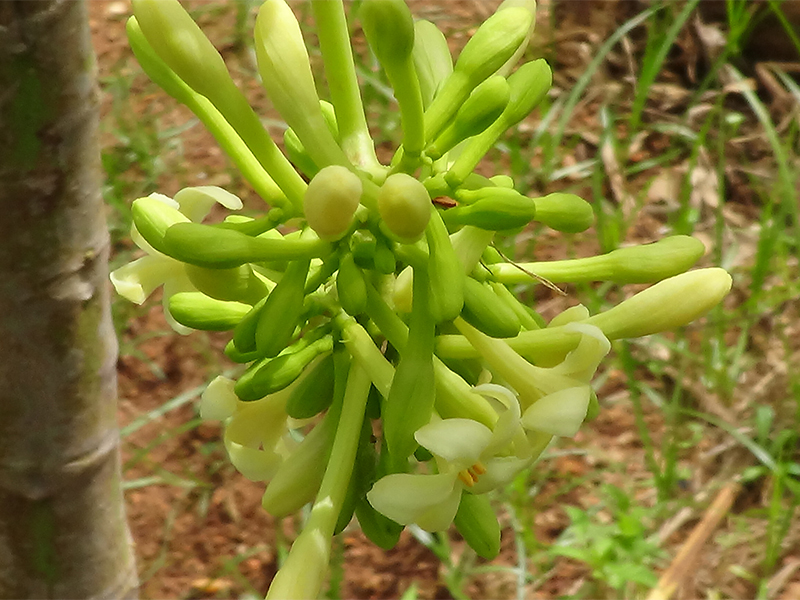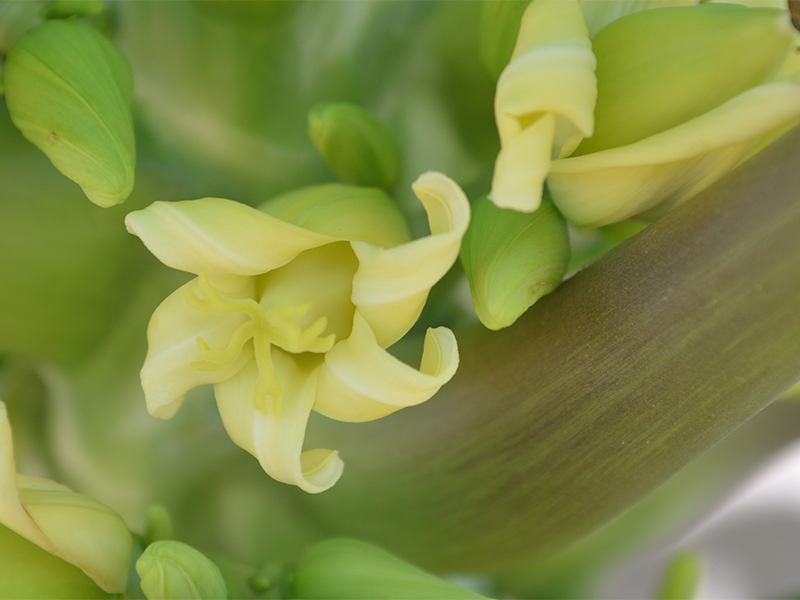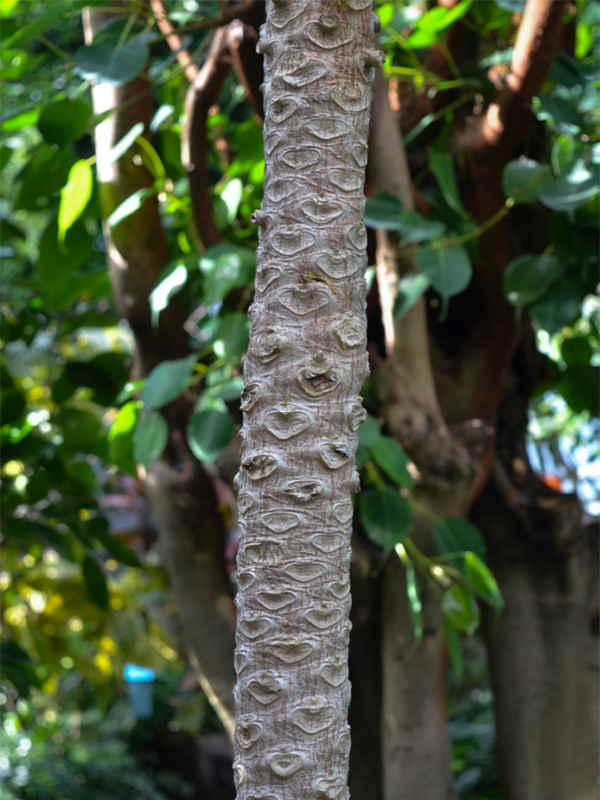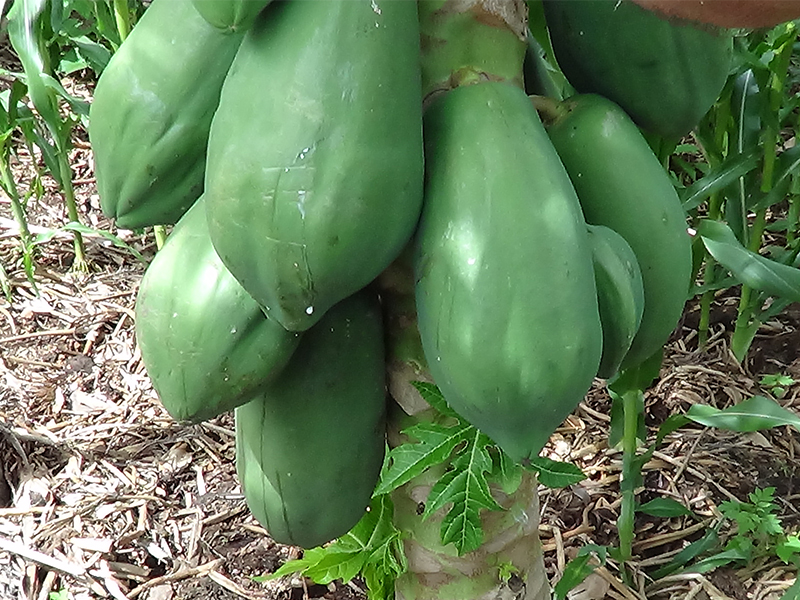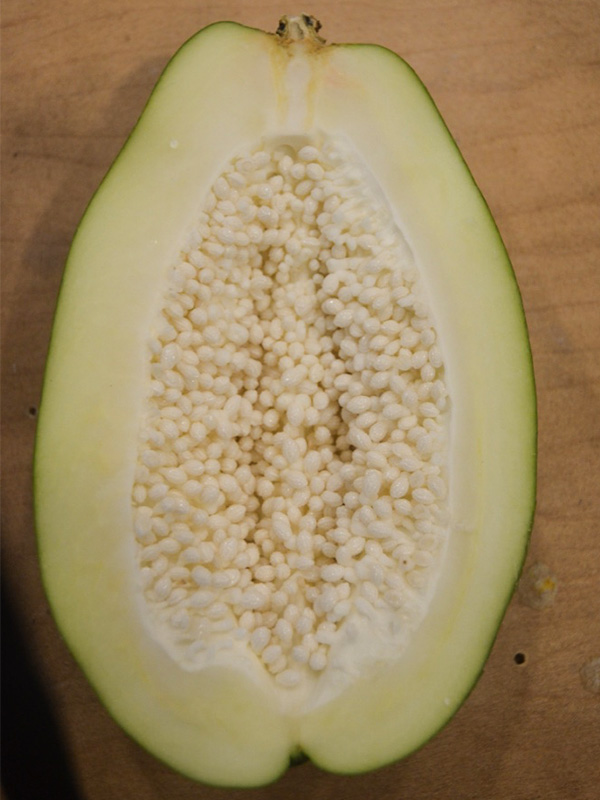Carica papaya (Papaya)
Michael's Opinion
A personal favourite of mine for the unripened green fruit which is made into a delicious Thai salad called som tam.
Botanical Information
| Family | Caricaceae |
| Genus | Carica |
| Species | papaya |
| Category | Tropicals |
| Type | Tree (evergreen) |
| Origin | South America. |
| Ethnobotanical Uses Disclaimer | The melon-like fruit are edible both green and ripe, including the seeds which can impart a peppery taste to salads. The fruit are high in vitamin A, C and E as well as potassium and fibre. |
Details
| USDA Hardiness Zone | 10 - 12 |
| USDA Hardiness Ref. | |
| Canadian Hardiness Zone | Requires cool season protection under glass. |
| Canada Hardiness Ref. | |
| RHS Hardiness Zone | H1c - H3 |
| RHS Hardiness Ref. | |
| Temperature (°C) | -5 - 10 |
| Temperature (°F) | 23 - 50 |
| Height | 1 - 6 m |
| Spread | 1 - 4 m |
| Growth | Fast |
| Flowering Period | January, February, March, April, May, June, July, August, September, October, November, December |
Description and Growing Information
| Shape | Upright canopy. |
| Landscape | Planted as a fruit tree, container planting and ornamental use. |
| Cultivation | Full sun and partial-shade. Well-drained, rich, humusy and moist soil. Frost intolerant. |
| Pests | Root rot may occur. |
| Habitat | Lowlands. |
| Bark/Stem Description | Single, unbranched and non-woody trunk. |
| Leaf Description | Palmately, 7-lobed leaves on stalks. |
| Flower Description | Fragrant, trumpet-shaped flowers. Male racemes are long and females appear in small clusters or solitary. |
| Fruit Description | Large, fleshy, melon-like fruit that hang in clusters attached to the top of the trunk under the canopy. |
| Colour Description | The flowers are yellowish-white. The leaves are green. The fruit is green and ripens to a yellowish-orange colour with a pinkish-orange inside. |
